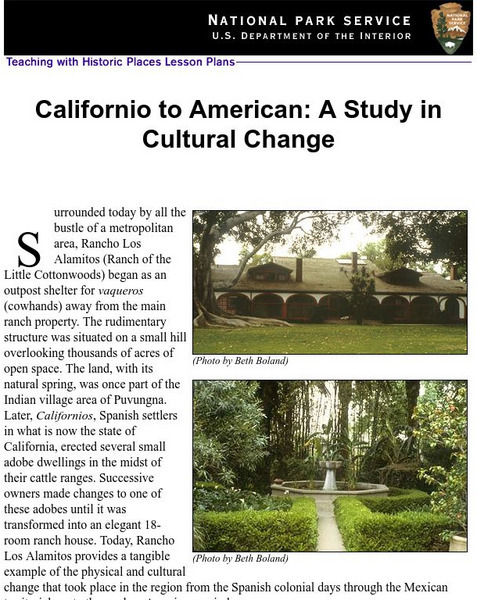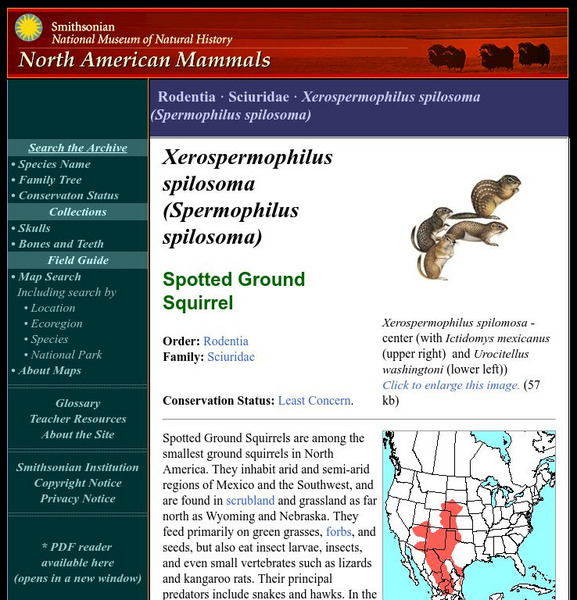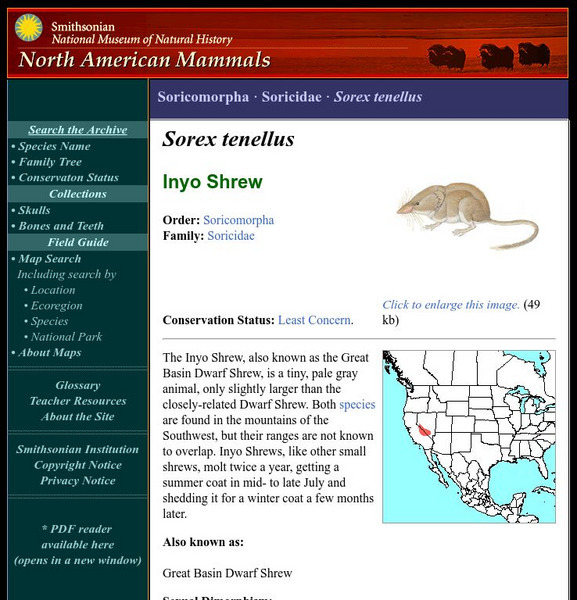Khan Academy
Khan Academy: Interactions Between American Indians and Europeans Pueblo Uprising of 1680
An overview of the Pueblo people in the Southwest who rose up against Spanish religious persecution and violence in 1680.
Ducksters
Ducksters: Native American History for Kids: Apache Tribal Peoples
On this site, students learn about Native American Indian Apache tribe from the Southwest of the United States.
Ducksters
Ducksters: Native American History for Kids: Navajo Nation and Tribe
Explore the Native American Indian tribe the Navajo from the Southwest of the United States on this site. Learn about the clothes they wore, jewlery they made, and other fun facts!
Other
Native Peoples of North America: Agricultural Societies in Pre European Times
A good introduction to the three major Native American cultures in the Southwest prior to European contact. Find information about the Mogollon, Anasazi, and Hohokam cultures. Read how they influenced each other, and what was unique...
Annenberg Foundation
Annenberg Learner: United States History Map: Indians
An interactive site showing the Native American culture areas and the major tribes living in those areas before the arrival of the Europeans. Click to find out more about Indians living in those area and find a game that challenges you...
ClassFlow
Class Flow: Southwest Literacy Unit
[Free Registration/Login Required] This flipchart is a literacy unit based around a Southwest / Westward Expansion Theme. Native Americans, pioneers, and the old west is covered. 8 different literacy strategies are taught with FULL...
California Digital Library
Escholarship Editions: Ceremonial Costumes of the Pueblo Indians
An exhaustive discussion of Virginia Roediger's 1941 book, "Ceremonial Costumes of the Pueblo Indians: Their Evolution, Fabrication, and Significance in the Prayer Drama", that studies in depth the Pueblo Indians; their history, social...
Annenberg Foundation
Annenberg Learner: Collapse: Why Do Civilizations Fall?
Why did great civilizations fall? War, disease, overpopulation or natural disasters? Interactive content and activities allow you, by sifting through archaeological evidence, to investigate the collapse of the Mayan civilization, the...
US National Archives
Nara: American Originals:exploring the Southwest: Don Diego De Vargas
This site from the National Archives and Records Administration, describes the colonization of the United States by the Spanish. Learn about Don Diego de Vargas, read his will, and view a photo of the area he colonized.
University of Arizona
Books of the Southwest: The Pima
An informational article about the customs of the Pima Indians from the Bureau of Ethnology at the Smithsonian Institute. With popular Pima legends.
Smithsonian Institution
National Museum of American History: Our Story: Explore Pueblo Pots [Pdf]
Students learn about Pueblo Indians, Santa Clara and Zuni, in particular, who made useful and beautiful pottery whose designs reflected their mythology and life. After viewing many of the designs, the students can draw their own pottery...
Curated OER
National Park Service: Californio to American: A Study in Cultural Change
This site has a lesson about the ranching industry, creation of California towns and the changes over time. Contains information, inquiry question, historical context, maps, readings, and images.
Gilder Lehrman Institute of American History
Gilder Lehrman Institute: History Now: The Pueblo Revolt
[Free Registration/Login Required] Read an essay about the Pueblo Revolt of 1680 and find out why the Southwest Native Americans rebelled against the Spanish, and were successful in keeping the Spanish out of their pueblos for only...
American Indian Heritage Foundation
Abenaki: indians.org: Indigenous Peoples' Literature
Learn more about the Abenaki tribe of Native Americans by checking out this site. Find out about the story "Strange Origin of Corn."
Other
Cowlitz Indian Tribe
Official website of the Cowlitz Indian Tribe. The tribe originally inhabited southwest Washington around the Cowlitz River. Check out an engaging article named "The Dispossed" in the site's history section.
Curated OER
Etc: Maps Etc: The War in the South and Southwest, 1862
A map of Arkansas, Louisiana, Tennessee, Mississippi, Alabama, and the western portion of Florida showing the area of western campaigns (1862) during the American Civil War. The map shows major cities, the railroad network, forts,...
Smithsonian Institution
National Museum of Natural History: American Mammals: Spotted Ground Squirrel
Spotted Ground Squirrels are among the smallest ground squirrels in North America. They inhabit arid and semi-arid regions of Mexico and the Southwest and are found in scrubland and grassland as far north as Wyoming and Nebraska. Learn...
Smithsonian Institution
National Museum of Natural History: American Mammals: Panamint Chipmunk
Panamint chipmunks are named for the mountains in the Southwest where they were first collected by scientists, in 1890. As with many chipmunks, males and females look alike and are the same size. Learn more about the Tamias panamintinus,...
Smithsonian Institution
National Museum of Natural History: American Mammals: Inyo Shrew
The Inyo Shrew, also known as the Great Basin Dwarf Shrew, is a tiny, pale gray animal, only slightly larger than the closely-related Dwarf Shrew. Both species are found in the mountains of the Southwest, but their ranges are not known...
Smithsonian Institution
National Museum of Natural History: American Mammals: Greater Bonneted Bat
Greater Bonneted Bats live in rugged, rocky canyons typical of the arid Southwest, where they inhabit crevices in vertical cliffs. Because of their relatively large body size and narrow wings, these bats are unable to take off from a...
Other
Indian Pueblo Cultural Center
Not exclusive to pre-contact, this site has an extensive collection of resources that describe many facets of various Pueblo cultures.
Curated OER
National Park Service: Fort Davis National Historic Site
Discover the historical Fort Davis, a critical military fort during Indian Wars and the Civil War in Southwest Texas. Fort Davis served to protect many people passing by the area between 1854-1891.
Curated OER
National Park Service: Fort Davis National Historic Site
Discover the historical Fort Davis, a critical military fort during Indian Wars and the Civil War in Southwest Texas. Fort Davis served to protect many people passing by the area between 1854-1891.
Other
Eastern Band of Cherokee: History and Culture
A brief history of the Cherokee tribe in the southwest United States, its culture, government, and religion. Find out about the Cherokee who were subject to the Indian Removal Act of 1830, and see how the Cherokee in North Carolina have...
Other popular searches
- Native American Southwest
- American Southwest Oil
- American Southwest Geography
- American Southwest Lessons






















